Mali
 The Republic of Mali lies in the west of Africa, it stretches between desert and sahel. It is three times as large as France, but much more sparsely populated.
The Republic of Mali lies in the west of Africa, it stretches between desert and sahel. It is three times as large as France, but much more sparsely populated.
Location
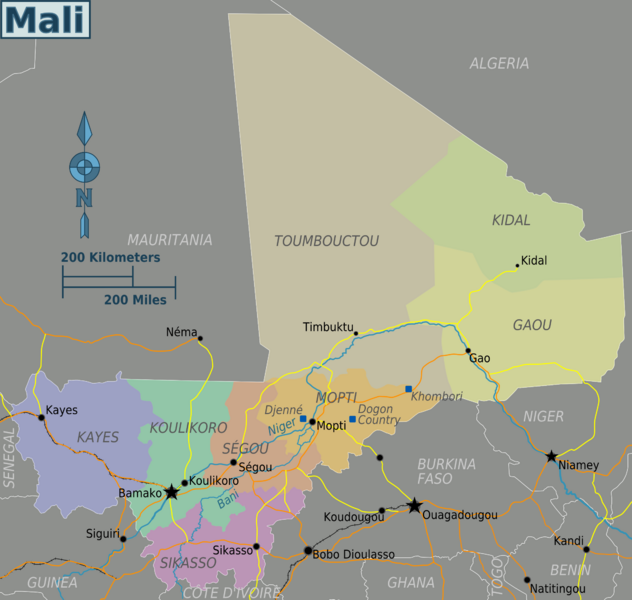
(c) Peter Fitzgerald
Mali is situated between Algeria, Mauretania and the Ivory Coast. It belongs to the Sahel zone which is composed of dry savannah. The Sahara desert takes up almost the whole north of Mali. The Niger River separates the north from the south marking the transition between the desert and the Sahel zone. Further south the land turns to savannah, while in the north there is a desert climate meaning it is hot in the daytime and at night time temperatures falls to almost freezing. Sometimes there will be no rainfall for years. In the southern savannah there is a tropical climate. As a result of climate change the Sahara desert is growing in size. This is why Mali is considered one of the poorest regions in Africa.
Landscapes

(c) H. Grobe
Mali’s north is largely covered by desert land. The plateaus and plains are crossed by two of Africa’s major river systems, the Niger and the Sénégal. The highland regions are localized and discontinuous. The plateaus of the Guinea Highlands, are a series of small, broken hills. East of the Niger River the Dogon Plateau descends gently westward to the river valley but ends in abrupt cliffs on the southeast. These cliffs reach an elevation approaching 1,000 metres at Bandiagara.
The Niger River is Mali’s Lifeline
In the language of the Bambara, a northern tribe, the word Mali means “hippo”. The Niger River actually used to be populated by hippos until they were almost wiped out during French colonisation. The Niger flows through Mali from west to east before turning towards the south. A wide delta is formed from its many tributaries. The majority of Malians live on the banks of the Niger and use it for both transport and irrigation. The inner delta of the Niger is the most fertile region of the country. When the river floods its banks, farmers plant a special type of rice. Because the stems of this plant grow up to 30 cm per day, they can never get completely flooded. Farmers must use a boat in order to harvest the rice.
The Capital Bamako
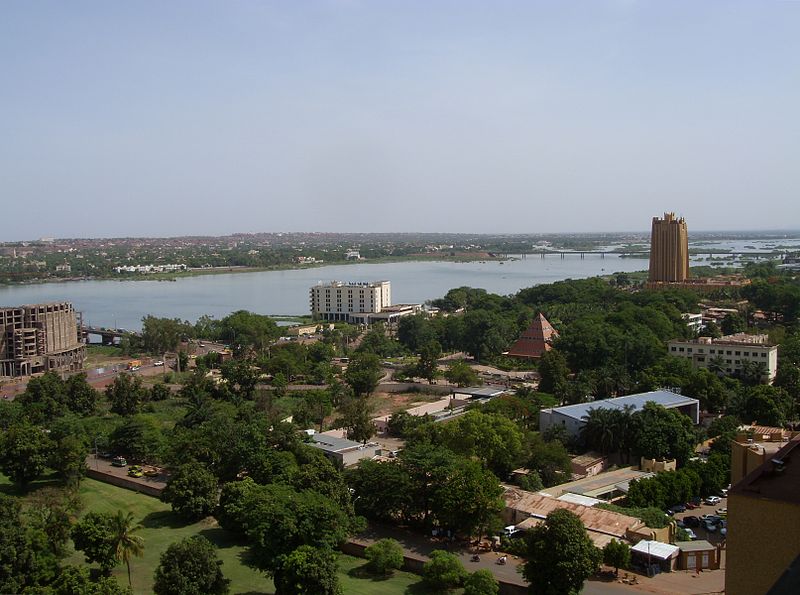
(c) Arendsond
Bamako is the capital of Mali and is situated on the Niger River. But even more famous is the desert city of Timbuktu, which was founded by the Tuareg a long time ago. This city was once also located on the Niger, but with the expansion of the desert it is now around 5 kilometres away from the river. The salt mines of Taoudenni can be found north of Timbuktu. Men and women chisel out slabs of salt into a size that camels can carry on the left and right side of their bodies. Camel trains then bring this salt to the Niger River where it is loaded onto ships and transported down the river.
Peoples and Languages

Mali is blistering heat, dry desert and endless sand plains. This is home to the Bambara, Malinke, Songhai and Tuareg tribes along with many others. They speak their native languages Bambara or Arabic, but most also speak French as it is the official language of Mali. This is a place to discover authentic features of African culture: Thatched huts, colourful markets, mysterious tribal masks and the sound of bush drummers. Until today, Tuareg camel trains carrying salt travel through the endless Sahara to Timbuktu. The Dogon still live in the enchanted sandstone cliffs on Bandiagara as they have for hundreds of years. The people of Mali are known for their mask dances and still today there are “mask associations”. Some of these groups meet publicly while others keep their dances and traditional rites a strict secret. Women are not usually allowed to attend such meetings, not even as spectators. Mask dances are usually performed by members of the association. Masks and costumes vary very much from region to region and are often modelled on animals, people or are formed like helmets. Only during the actual dance is the supernatural meaning of the masks revealed.
Schools and Education
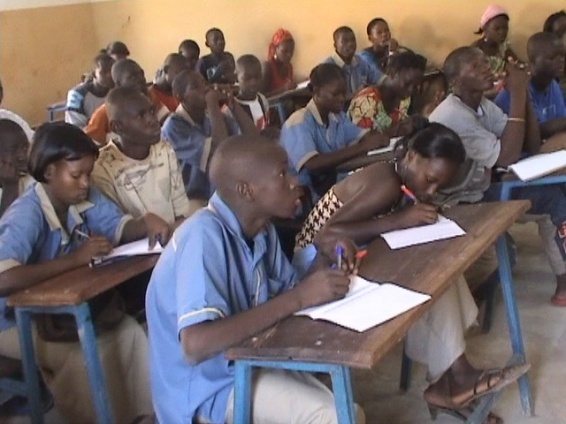
(c) Fevrier
Children start school at different ages. Many begin school at six, others not until they are nine. Lessons are taught in French and the school system and curriculum are similar to those in France. Most schools are not a very comfortable environment for the children. There are often up to sixty or more children in one class and usually not enough toilets for all the pupils. They have to wait in long queues during break time. Only half of all children are able to attend school. Girls are disadvantaged regarding education, as they often have to help with the work at home. They belong to the majority of Malians who are unable to read or write. Today academic education is a privilege in Mali, which is usually only available to young people from wealthy families. In former times Mali was a center of knowledge. One of the oldest universities is Sankoré in Timbuktu, which dates back to the 15th century. The University of Bamako is the centre of science of Mali today. Its main campus is in the neighborhood of Badalabougou.
The Animal Kingdom
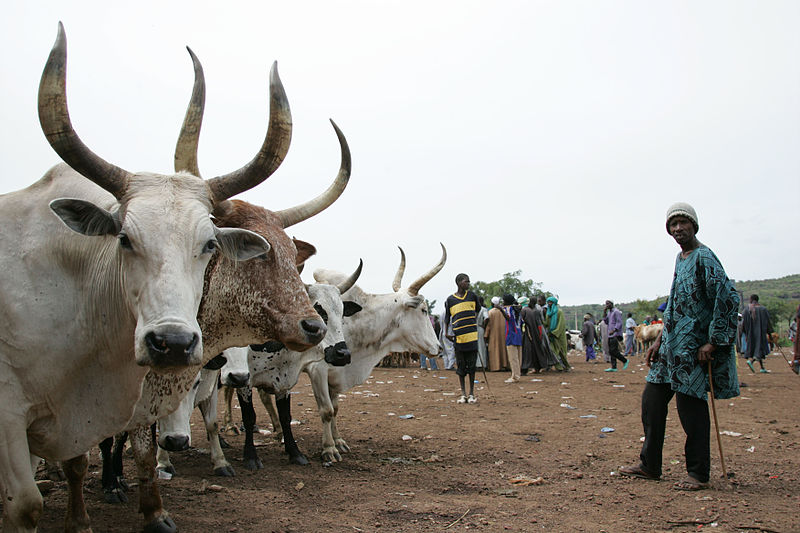
(c) ILRI
Some Decades ago, Mali’s savannahs were home to giraffes, elephants, antelopes and lions. The severe drought of 1968 put an end to this wealth of wildlife. Many animals died of thirst or were killed by farmers competing for the little water that was available. Many Malians keep buffalo, cows, goats and chickens as pets.
Mali’s Mosques
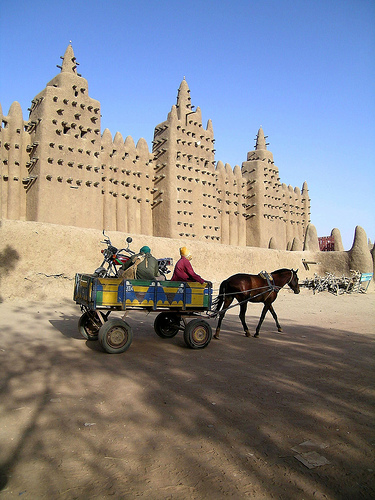
(c) c.hugues
Mali’s resplendent old mosques display the influence of Islam on the country. Most mosques across West Africa are built using clay and a wooden frame. One of the most famous and impressive Islamic constructions is the Great Mosque of Djenné. Its wooden frame is made up of bundles of palm sticks which project horizontally from the building helping to direct water away from the main structure. They also make it easy for construction workers to climb the building. Usually only people of the Muslim faith are allowed to enter the mosques in Mali.
More about the Islam in Africa
Economy and Natural Resources
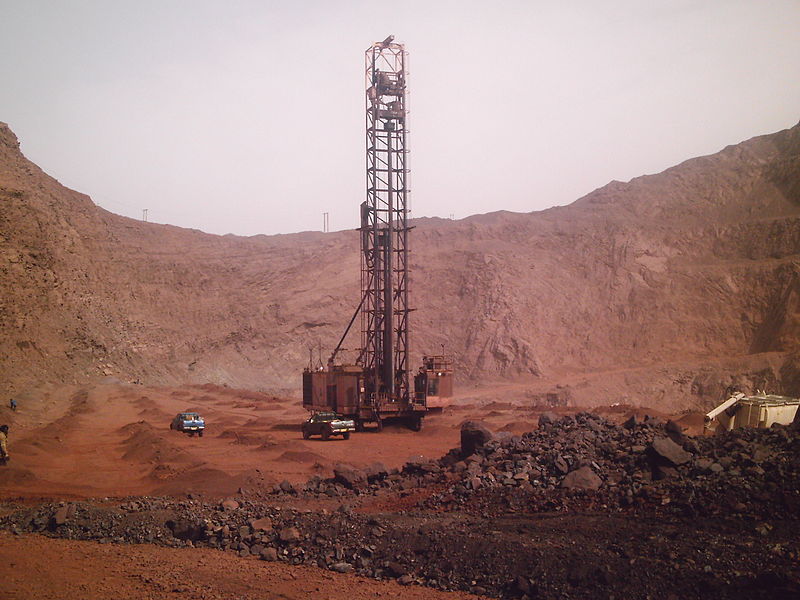
(c) Magharebia
Is there crude oil in Mali? Experts think so, but haven’t yet found much of it. The black gold could help the country, to improve its revenues. Until then, Gold is the pecious metal, that is extremely important to the economy. Mali is the third largest exporter of gold in Africa, producing over 45,000 tonnes of the metal each year. The largest mines are at Sadiola and Loulo in western Mali. Other natural resources in Mali include salt, marble and limestone. But these are extracted in fairly small quantities. Farming is the country’s main activity, though much of its land is desert or semi-desert. In drier regions, Malians raise goats, sheep and cattle. In the wetter south, farmers are mainly subsistence growers. They cultivate the food they need. But some crops – such as peanuts and maize – are grown on larger plantations.The most important cash crop is cotton. Thanks to the fertile areas along the River Niger, Mali is a key cotton producer. Mali is a poor country, over half the population survive on less than a dollar a day.
The History of Mali
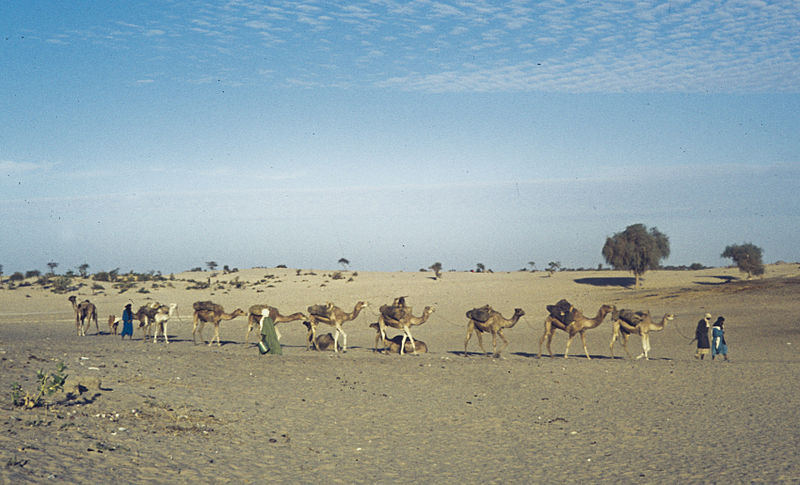
(c) H. Grobe
In the Middle Ages Mali was known for its wealth in gold. The Lion King Sundiata Keita made the Malinke the most powerful tribe in Africa. In the 13th century AD he had control over world trade because of his wealth in gold, copper and salt. From the 8th century onwards, Islam became known in the country because of the trans-Saharan trade. Arab merchants operating in Moroccan towns bought gold from the Berbers, and financed more caravans. These commercial transactions encouraged the conversion of the Berbers to Islam.
Mali today
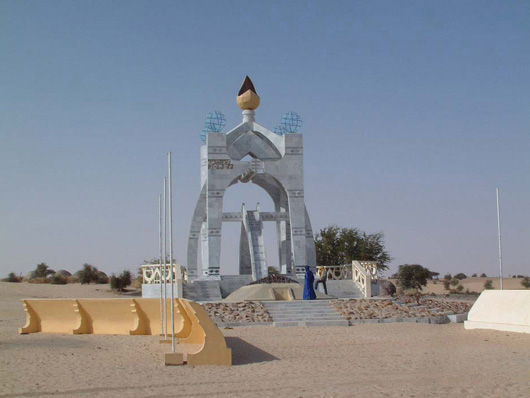
(c) Taguelmoust
Mali is considered to have a democratic government. It has had a democratic constitution since 1992. But not all of Mali’s population has a say in political decisions. In the north of Mali there are often conflicts with the Tuareg who have settlements in Mali, Niger and Burkina Faso. They are considered Malian but they have few rights and no land of their own. Islamic terrorist groups pose another problem because they make the north west of Africa very unsafe. However Mali’s most serious issue is widespread poverty. Although a lot has been done to improve the education system, there is still a long way to go. More than half of the Malian population can neither read nor write and three quarters of its youth are unemployed.
Stories from Mali
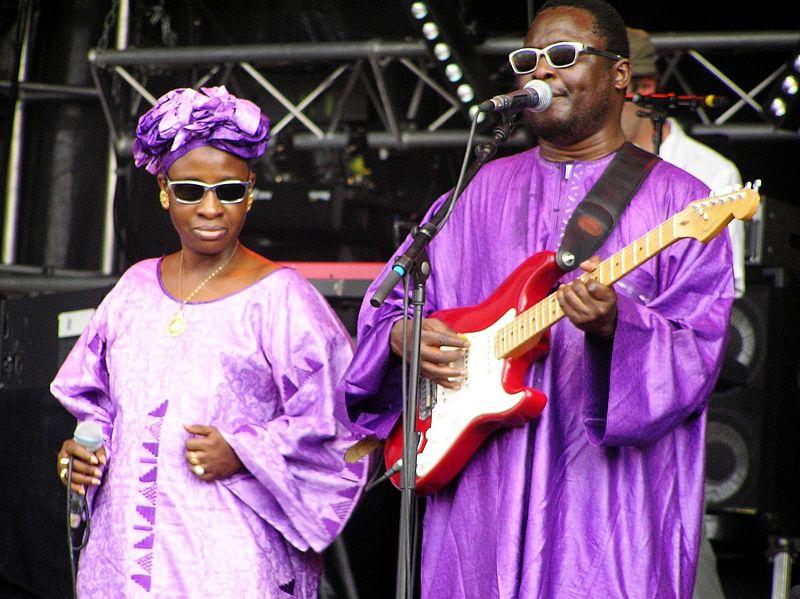
(c) Jerome
Mali is a land of storytellers known as “griots”. Griots know hundreds of stories by heart having truly mastered the art of memory. All griots know the Epic of Sundiata from the ancient Malian empire.



